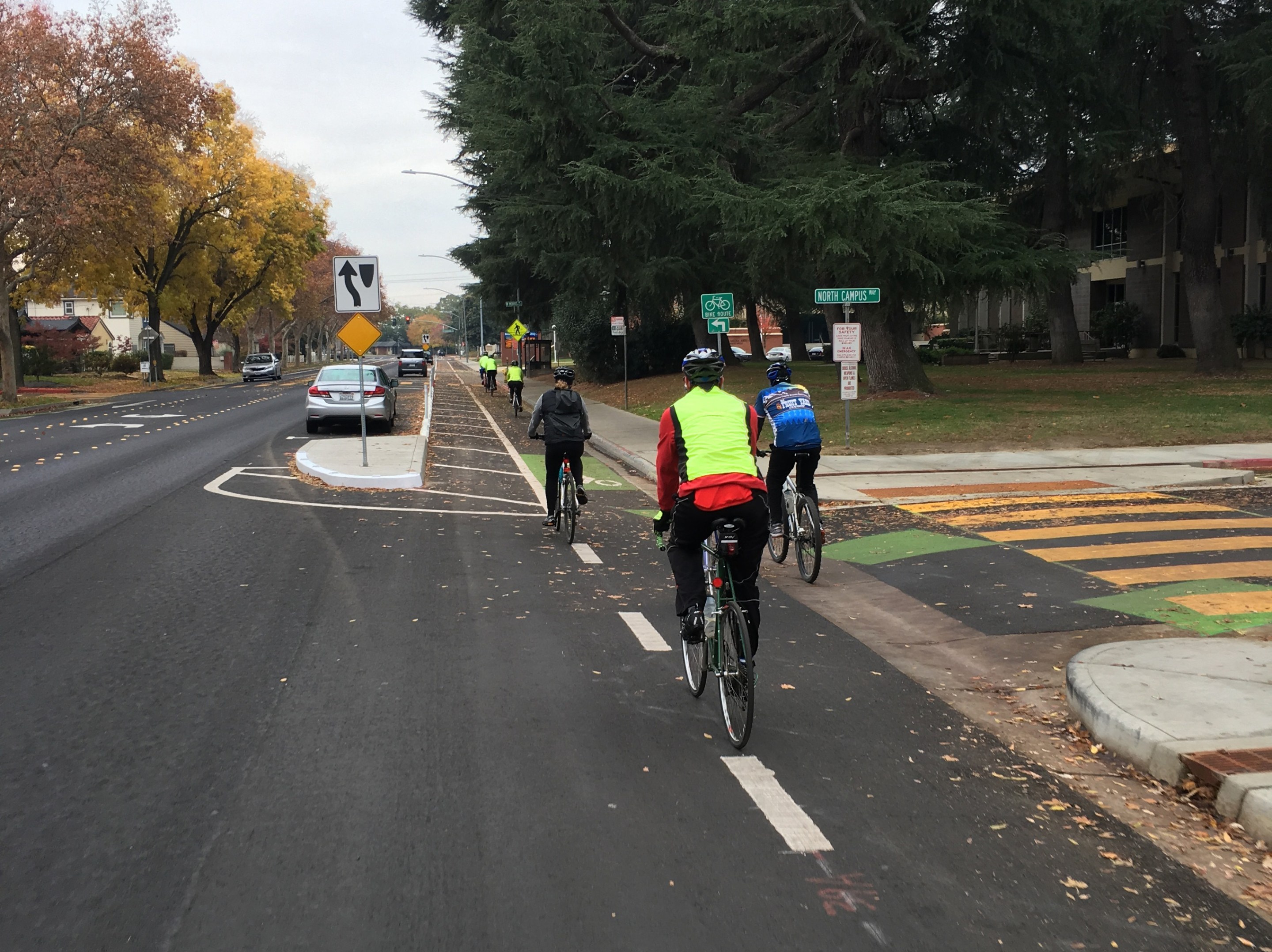We’ve all had this experience:
We’re out walking a dog or riding a bike through our neighborhood when, all of a sudden, a car zooms by, too close for comfort. Our hearts race at the close call. We shake our fist at the driver. “Can’t you see people walking here?”
But when those dangerous streets and intersections are state-owned roads, we really should be shaking our fists at the state Department of Transportation (Caltrans), which designs roads that encourage speeding and dangerous driving in urban neighborhoods and rural main streets.
We can do better, but we need help from the state legislature because the worst streets in our communities aren’t under our local control. These so-called “state highways” that run through our communities as urban streets or rural main streets are wholly owned and operated by Caltrans.
In California between 2007 and 2013, nearly 1.7 million people were injured in traffic incidents, including 95,758 while walking along or across the street. In those crashes, 22,117 people were killed, with pedestrians accounting for one fifth of the total persons killed. The problem is even worse when Caltrans roads go through low-income neighborhoods where more people get around by bus, on bikes, or on foot.
A new bill now moving through the legislature could fix it. The Complete Streets for Active Living bill, S.B. 127, would mandate that whenever Caltrans repaves or expands a state-owned surface street that passes through urban neighborhoods, it must create safe access for all users, including pedestrians, bicyclists, motorists, and transit riders of all ages and abilities.
Caltrans will often claim it makes streets safer when it repairs them. It even has a Complete Streets policy that requires its engineers to consider such improvements in every project. But the policy has been no more than empty words. In practice, Caltrans prioritizes fast traffic over communities’ demands for more livable streets almost every single time.
Caltrans can’t be trusted to fix dangerous state highways without stronger direction from the legislature. We need this Complete Streets bill to provide that direction, and to force Caltrans to build the safety improvements communities need so the killing and maiming of people on state-owned roads can end. Caltrans calls them highways, but we call them home — they are lined with small businesses, schools, senior centers, places of worship, parks, and people dear to us, like our children.
The bill is not strict; Caltrans wouldn’t have to implement safety improvements if for some reason they are not appropriate or if they’re too expensive. And the bill would only applies to sections where you’re likely to see people walking and biking, about 17 percent of the total state highway system. But it would force Caltrans to implement safety improvements when it’s cheapest to do so: when they’re repaving the street anyway.
This kind of policy has strong support. One poll found that 78 percent of California voters support a policy requiring safety improvements when a road is repaired. They want children to be able to safely walk or bike to school. Hundreds of schools exist within a half-mile of a California State Route, and these streets remain some of our most deadly.
Californians want safer, more livable streets that support local businesses and local jobs. They want the ability to walk and bike safely, because it’s affordable, healthy, and fun.
Fixing state highways to accommodate all users will improve our communities, our health, and our local economy.
The Complete Streets for Active Living Bill passed the Assembly Transportation Committee, but it has more hurdles to go before it becomes law. Even after months of negotiations with stakeholders to get the bill approved by the Senate, Assembly Members could kill or severely weaken the bill. Every provision that elevates the importance of biking and walking safety is at risk.
That’s why we need you to tell your state assemblymember to vote YES on S.B. 127, the Complete Streets for Active Living Bill, today.
Go here for more information about how to take action.
Dave Snyder is the Executive Director of the California Bicycle Coalition.






